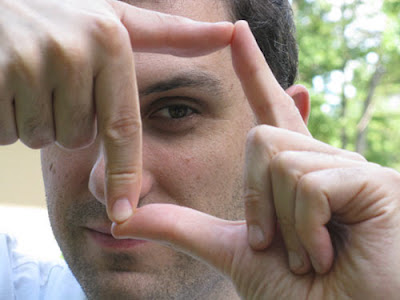(To learn more about the “Viewfinder Project” see the original post.)
For many of us we are conditioned to see life framed by a screen. We spend hours in front of the computer, phone, tv, etc. Content is created quickly for these ever changing platforms and artist/creators now have more sophisticated tools to compare and edit visual material. Because of the widespread use of graphic content, it may seem to passive viewers that organizing visual content is natural and without precedence. In the early nineteenth century (prior to the invention of photography) compositions had to be devised by hand in a deliberate way. In this earlier era a graphic presence in culture must have seemed less diverse and also by comparison less pervasive.
When making my print about the viewfinder, I imagined the eighteenth century artists’ milieu and thus featured characters I associated with this time. In the latter part of the twentieth century the the traditional viewfinder used in art class has become both a relic and a reminder of the struggle to find a perspective.
Approaches to arrangement such as collage have also influenced compositional thinking. Rather than focusing attention on the picture as a window that reveals the illusion of a figure or a scene, artists have been combining diverse content as part of larger layouts. Unlike a traditional collage, on the computer screen the layout is unfixed. Images and icons are moved and ordered according to convenience or whim. In this realm notions of aesthetic permanence seem less significant. This shift in the way imagery is approached and created has changed art making and partially account for the variety of “Viewfinder” images I received.
Even though finding the most relevant view still requires great scrutiny, I am learning to set the traditional viewfinder tool aside. We have an abundance of tools, technologies, and platforms to help us see but often the greater problem is deciphering the glut of visual messages we are exposed to on a daily basis. In this regard our greatest assets are critical thinking and a knowledge of design. These skills will allow us to filter content so that we can focus on what is local (e.g. our friendships and our immediate surroundings) and enriching (what allows us to see the complexity that life provides).
 |
| Portrait of the author making a viewfinder with his hands. |
